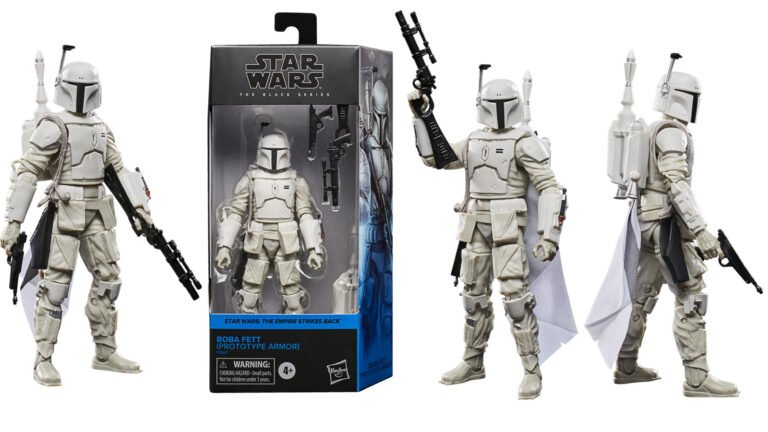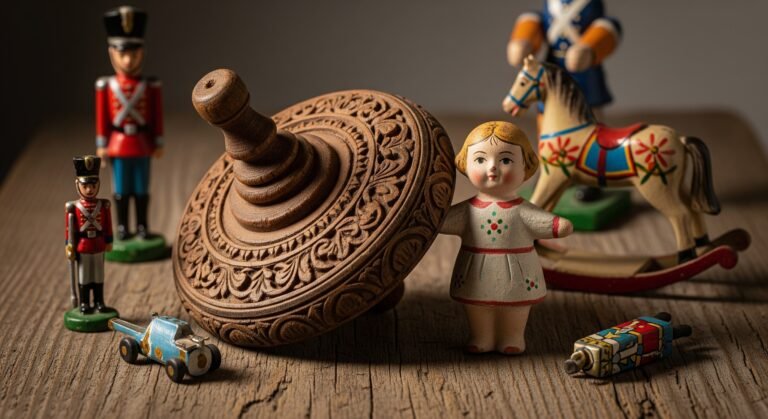How to Authenticate Vintage Toys might sound hard, but it doesn’t. There are several ways you can find out if your old toys are really vintage or not. Maybe you found an old robot, action figure, or doll and wonder if it’s the real thing. It could be from a flea market, your attic, or even your old toy box.
If you want to know if it’s truly vintage, this guide will help. You’ll learn how to check for real brand names like Mattel, Kenner, or Hasbro. You’ll also see how to look for labels like “Made in Japan” and use toy lists to compare.
We’ll show you how toy shows and online groups can help you find out if your toy is rare or just a copy. No guessing, just simple steps.
Understand What Makes a Toy Vintage or Authentic
A toy is called vintage if it is old but not too old, usually made before the 1990s. If it is over 100 years old, it may be called antique. But just being old is not enough. A toy is authentic when it is real and not a copy.
Vintage toys were made by well-known brands like Mattel, Hasbro, Kenner, or Fisher-Price. These toys were strong and made with good materials like metal, wood, or thick plastic.
Also, check where the toy was made. Labels like “Made in Japan,” “Hong Kong,” or “West Germany” can mean the toy is from an older time. These are good signs for collectors.
To learn more, you can look at toy books, collector websites, or lists of toys from each decade. This helps you understand if your toy is truly vintage and worth keeping.
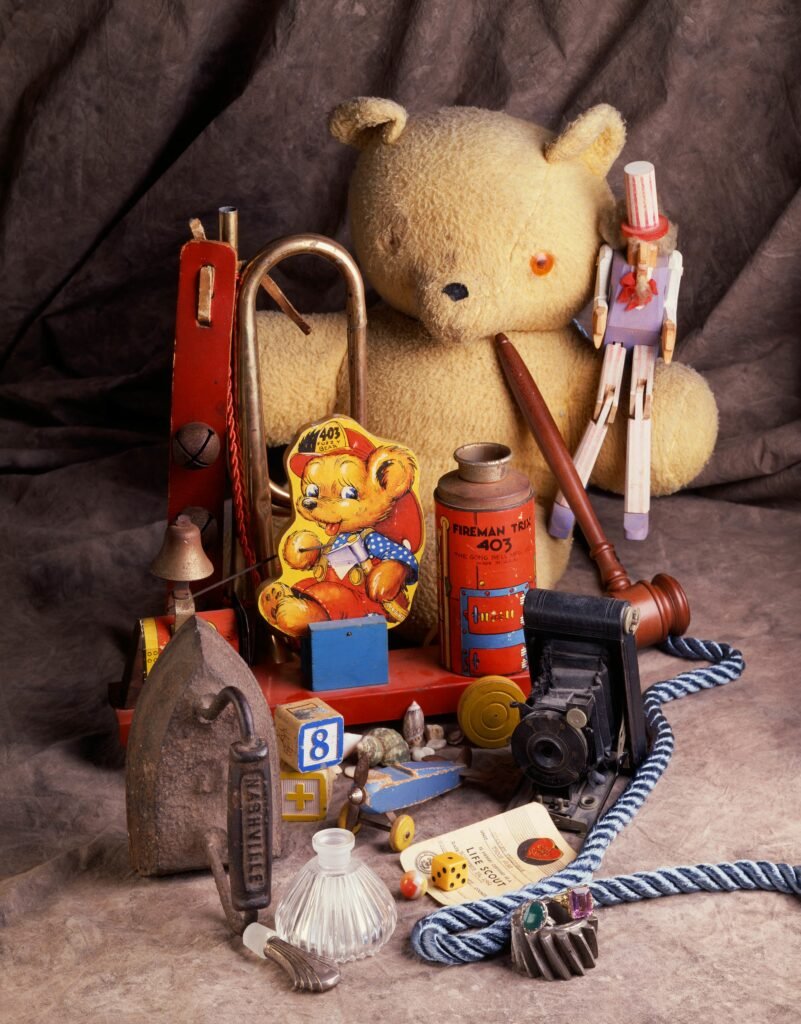
Check for Manufacturer Markings and Labels to Auntheticate Vintage Toys
Real vintage toys often have a name or stamp from the company that made them. This is called a manufacturer mark. It helps you know if the toy is real.
Look at the back, bottom, or inside part of the toy. You may see names like Mattel, Hasbro, or Kenner. You might also see a year or a label like “Made in Japan” or “Made in Hong Kong.” These are good signs that the toy is old and real.
If there is no name or the writing looks wrong, the toy might be a copy. Some fake toys use logos that don’t look quite right.
To be sure, you can check pictures in toy books or trusted websites. That way, you can match your toy to the real one.
Examine Materials and Build Quality
Old toys were made with strong and heavy materials. Many vintage toys used metal, thick plastic, or solid wood. They were built to last a long time.
If your toy feels light or looks shiny and new, it might not be real. Real old toys often show signs of age. You might see small scratches, faded paint, or even tiny rust spots on metal toys. These signs are normal and show that the toy is truly vintage.
Fake toys may look too perfect. Some copies even try to add fake damage, but it doesn’t look right.
Use your hands and eyes. Feel the toy. Look closely at the colors and shapes. Real vintage toys often feel sturdy and well-made.
Spot Common Fakes and Reproductions
Some toys look vintage but are not real. These are called fakes or reproductions. They try to copy old toys, but there are ways to tell them apart.
Here are some red flags to look for:
- The toy looks too clean to be 50 years old
- It has bright, shiny paint or tin that looks new
- The writing or logo looks odd, blurry, or off-center
- The packaging has barcodes or plastic wrap that did not exist back then
If you see any of these signs, be careful. The toy might not be real.
Many collectors share tips in online groups and forums. You can ask questions and compare photos. Groups of toy collectors often know what to look for and are happy to help.
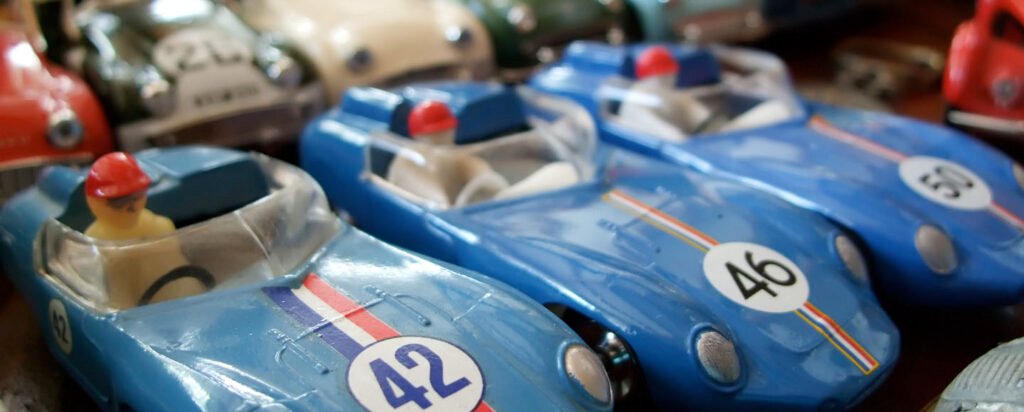
Use Reference Guides and Collector Tools
If you’re not sure whether a toy is real or fake, there are many tools that can help. These tools can give you pictures, dates, and brand names to check against your toy.
Here are some of the best ways to do that:
Use Toy Guidebooks
Toy guidebooks are great for beginners. They show clear pictures of toys, sorted by year, brand, and type. These books often include info like original prices, materials used, and factory stamps.
Good examples:
- Warman’s Antiques & Collectibles
- Toys & Prices by Mark Bellomo
- The Official Price Guide to Collector’s Toys
Try Image Search Tools
Apps like Google Lens or Pinterest Lens let you scan your toy with your phone. They search the internet for matches so you can compare your toy to real ones. This is fast and easy for finding look-alikes or spotting fakes.
Use Online Toy Catalogs and Databases
Many websites list vintage toys with photos, brand info, and release years. These are great for checking small details like colors, sizes, and packaging.
Helpful sites include:
- The Toy Collector (community site for serious collectors)
- eBay sold listings (search by brand + year to see real selling prices)
- The Big Toy Book Archive
- Toypedia on hobbyDB
- Wikipedia’s List of Toys
Tip: Keep notes and save links or photos when you find a match. It helps you stay organized when checking many toys.
| Tool Type | Name or Example | What It Does | Where to Find It |
| Guidebook | Toys & Prices by Mark Bellomo | Shows pictures, years, and prices of vintage toys | Amazon, bookshops |
| Guidebook | Warman’s Antiques & Collectibles | Covers toys by type and brand | Libraries, collector bookstores |
| App | Google Lens | Scans toys and finds similar images online | Free on smartphones (Android/iOS) |
| Online Catalog | hobbyDB’s Toypedia | Lists many toys with photos and maker info | hobbydb.com |
| Online Catalog | The Big Toy Book Archive | Visual reference for vintage toys | Various collector sites |
| Community Resource | Toy Collector forums (e.g., Facebook, Reddit) | Ask questions, share photos, get real feedback | Facebook groups, Reddit |
| Price Checker | eBay Sold Listings | See what real toys recently sold for | ebay.com → Advanced Search |
| Reference List | Wikipedia: List of Toys | Good general list of toy names and history | en.wikipedia.org/wiki/List_of_toys |
Get a Second Opinion from Experts
Sometimes, even after checking books and websites, you’re still not sure if your toy is real. That’s when it’s a good idea to ask an expert.
Here are some easy ways to do that:
Ask in Online Collector Groups
There are many toy collector groups on Facebook, Reddit, and other forums. Just post a clear photo of your toy and ask for help. Many experienced collectors are happy to share what they know. Try searching for:
- “Vintage Toy Collectors” (Facebook groups)
- r/ToyExchange or r/ToyCollectors (Reddit)
Visit Antique Toy Shows
Antique toy shows are great places to meet experts in person. You can bring your toy and ask for an opinion. Some shows even have booths for free appraisals. Look for events near you online or at local antique shops.
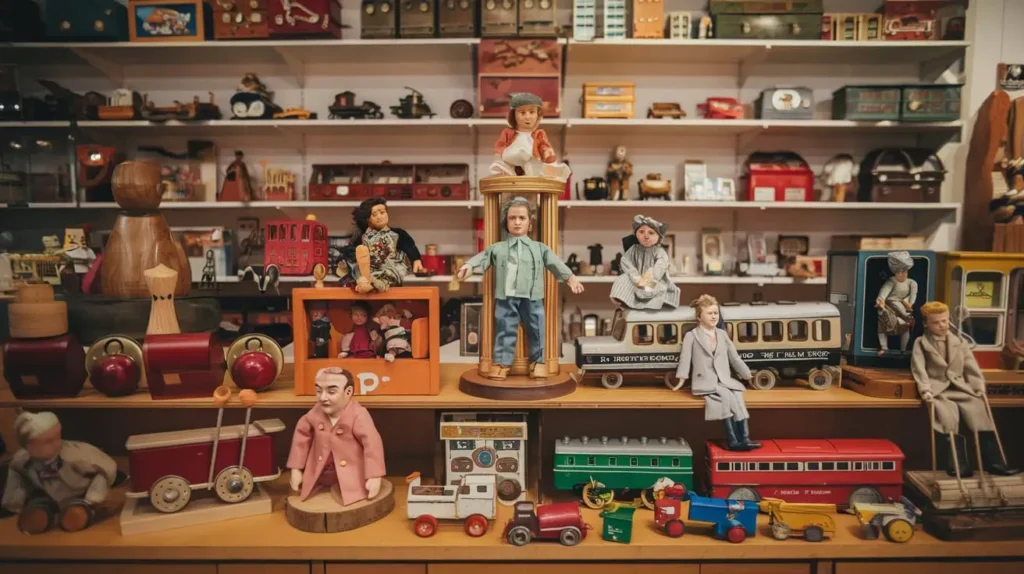
Talk to a Professional Appraiser
If you think the toy might be rare or valuable, you can hire a toy appraiser. These are trained experts who study toys and their history. They can give you a written report of the toy’s value.
Check Museums or Collector Websites
Some museums and serious collector sites have photo archives or Q&A sections. These can help you spot rare models or factory versions you didn’t know about.
Even experts sometimes need to do research. Don’t worry if it takes a little time to get the answer. The more you ask and learn, the better you’ll get at spotting real vintage toys yourself.
Conclusion
Knowing how to tell if a toy is truly vintage can take some time, but it’s not too hard when you follow the right steps. You’ve now learned how to check brand names, look for signs of age, and spot labels like “Made in Japan” or “Kenner 1983.” These small details help show if your toy is real or a copy.
You also know how to use helpful tools like guidebooks, Google Lens, and toy catalogs online. These tools make it easier to find pictures and facts about your toys. If you still have questions, you can ask in toy collector groups, go to toy shows, or talk to a toy expert.
Even if you’re just starting, every toy you check teaches you something new. You may even find out that a toy from your home is rare or worth money. And best of all, you’ll become part of a fun and friendly world of collectors who love vintage toys just like you do.
Frequently Asked Questions (FAQ)
I found an old toy in my attic. How can I tell if it’s vintage or just old?
Great question! A toy is considered vintage if it’s at least 25 years old and was made by a known brand like Mattel, Hasbro, or Kenner. Look for brand names, dates, or labels like “Made in Japan” or “Made in Hong Kong.” Also, check if the toy feels sturdy and shows signs of age like faded paint or small scratches.
My toy looks too perfect. Could it be a fake?
Possibly. Real vintage toys often show some wear. If your toy has bright, shiny paint, modern packaging, or logos that look off, it might be a reproduction. Compare it with pictures from trusted sources or ask in collector groups online.
Where can I learn more about my toy’s history?
You can check toy guidebooks like Toys & Prices by Mark Bellomo or Warman’s Antiques & Collectibles. Online databases like hobbyDB’s Toypedia or the Wikipedia List of Toys are also helpful. Apps like Google Lens can help you find similar images and information.
How do I know if my toy is valuable?
Value depends on factors like rarity, condition, and demand. Toys in their original packaging or those that are hard to find are usually worth more. Check completed listings on eBay to see what similar toys have sold for. Remember, even if a toy is old, it might not be valuable if it’s common or in poor condition.
Should I clean my vintage toy?
Be careful with cleaning. For toys made before the 1940s, cleaning can damage the materials or remove the patina that adds to their value. If you must clean, use a soft cloth and avoid harsh chemicals. Always test a small area first.
See why ancient toy replicas still matter today.

